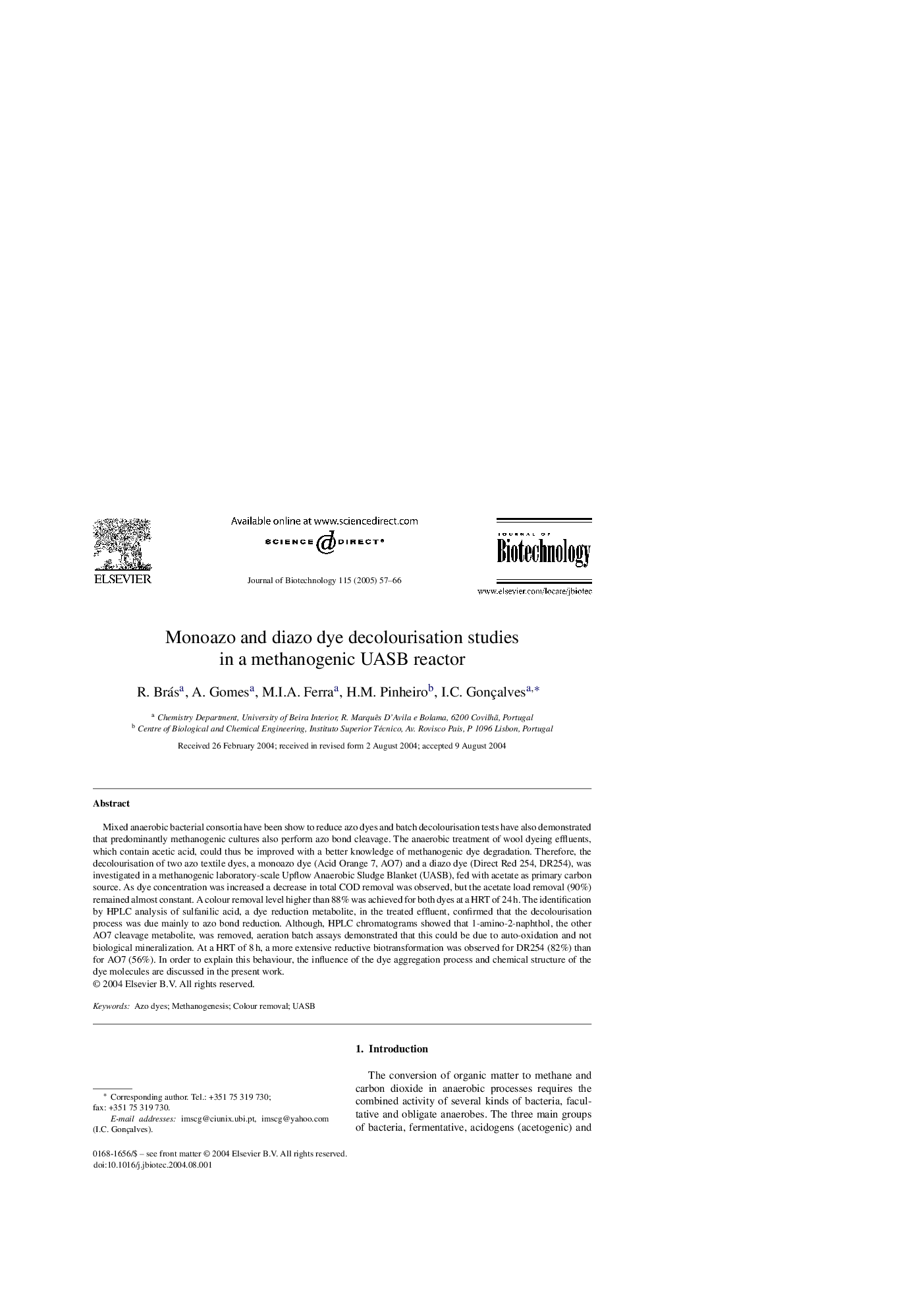| Article ID | Journal | Published Year | Pages | File Type |
|---|---|---|---|---|
| 9604502 | Journal of Biotechnology | 2005 | 10 Pages |
Abstract
Mixed anaerobic bacterial consortia have been show to reduce azo dyes and batch decolourisation tests have also demonstrated that predominantly methanogenic cultures also perform azo bond cleavage. The anaerobic treatment of wool dyeing effluents, which contain acetic acid, could thus be improved with a better knowledge of methanogenic dye degradation. Therefore, the decolourisation of two azo textile dyes, a monoazo dye (Acid Orange 7, AO7) and a diazo dye (Direct Red 254, DR254), was investigated in a methanogenic laboratory-scale Upflow Anaerobic Sludge Blanket (UASB), fed with acetate as primary carbon source. As dye concentration was increased a decrease in total COD removal was observed, but the acetate load removal (90%) remained almost constant. A colour removal level higher than 88% was achieved for both dyes at a HRT of 24Â h. The identification by HPLC analysis of sulfanilic acid, a dye reduction metabolite, in the treated effluent, confirmed that the decolourisation process was due mainly to azo bond reduction. Although, HPLC chromatograms showed that 1-amino-2-naphthol, the other AO7 cleavage metabolite, was removed, aeration batch assays demonstrated that this could be due to auto-oxidation and not biological mineralization. At a HRT of 8Â h, a more extensive reductive biotransformation was observed for DR254 (82%) than for AO7 (56%). In order to explain this behaviour, the influence of the dye aggregation process and chemical structure of the dye molecules are discussed in the present work.
Related Topics
Physical Sciences and Engineering
Chemical Engineering
Bioengineering
Authors
R. Brás, A. Gomes, M.I.A. Ferra, H.M. Pinheiro, I.C. Gonçalves,
